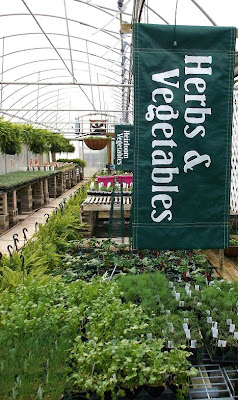Hey Everyone! This week I decided to do another blog on a
Pinterest-inspired idea: The Fairy Garden.
If you’ve spent any time at all in the Gardening section on
Pinterest, you have seen the Fairy Garden trend take flight…
And with so many
grand examples of a Fairy Gardens to inspire and intimidate, I thought it would
be a good idea to illustrate how easy and fun it can be to create your own.
Step 1:
The first thing you’ll need to come up with is a pot or base
of some kind. I’ve decided to go with light-weight terracotta imitation pot. It
has a lovely design that contributes to the overall look I’m going for, yet the
plastic material will make it easy to move around if I so desire. I want something
a little smaller, so my pot is about 18 inches in diameter and about 8 inches
deep. But as you can see from the pins I’ve gathered, any pot can be
transformed into a Fairy Garden (even a bird bath).
*Note* if you select a pot that is without drainage holes,
do not fret. A thin layer of marbles, stones, or clay pebbles at the bottom of
your container should provide sufficient drainage.
Step 2:
Next, go ahead and pile some dirt into your container. I
have attempted to create a tri-level effect with my soil, but as the garden
unfolds my levels will shift dramatically, so don’t focus too heavily on that.
Here comes the fun part: plant selection! First, it’s best
to decide where you plan to place your Fairy Garden. Knowing this will mean
knowing your light requirements. Since my garden will live in part-shade,
part-sun, I’m looking for plants that will be happy in both.
So, with light requirements in mind, the first plant to
choose is the one that speaks to you. The first plant I am selecting is a Ginseng Ficus Bonsai Tree.
This tiny tree seems
sooo appropriate for a Fairy Garden, I couldn't resist. Next, I chose Begonias,
Veronica Sunshine, Coleus, and a really neat Rex Begonia.
I’ve tried to pick a
variation of plants that will help create the illusion of a mini garden. The Ficus
will function as my tree, the Begonias will act as my flowers, the Coleus is
intended to resemble shrubbery, and the Veronica Sunshine will be a ground
cover.
Step 4:
And so begins the
situating! After you’ve gathered all of your possible plants, it’s time to
begin placing them. First, begin with your foundations. In this case, my
foundations are the Ginseng Ficus and the Rex Begonia. I want these two items to be
the highest points in my garden. This will help create the look of natural
terrain. After you decide where to place your foundations, go ahead and add
your filler (in my case, this is my Coleus/shrubbery). I have placed my filler
close to my foundation pieces in the hopes of creating a cascading effect.
Finally, place your flowers and trailer/groundcover.
Once you are
satisfied with your placement, go ahead and plant!
*Note* don’t feel as
if placement is a permanent thing. Just because you envisioned a certain plant
going in a certain place doesn't mean it will. I played around with placement
for quite some time, and I ended up with something very different from what I
had envisioned.
Step 5:
So your garden is
planted and it’s time to add other natural elements. This step is entirely
optional, but including other natural elements in your Fairy Garden can really
step-up your design. Since I have a valley in-between my two foundational
plants, I thought a river stone path would look nice.
The stones are
particularly nice because they add a lot of color contrast in comparison to the
plants and soil. However, if you aren’t a fan of the stones, wood-chips would
also work well. If you were going for a more whimsical vibe, marbles, sea
glass, or colored pottery shards might be neat too. Anyway, lightly pour your
material of choice into a path/landing pad. When you are satisfied with your
natural accessories move on to the final step…
Step 6:
Finally, the end is
nigh! (But in a “wasn’t this so much fun?!” kinda way). This last part is the
most fun because it involves shopping for garden accents!
As you can see, the
Greenhouse alone has many different fairy accents to choose from. There are the
expected fairies, gnomes, and mushrooms, but there are also trellises, bridges,
and furniture. I decided to keep my Fairy Garden plant-focused and chose a very
natural-looking wrought iron fairy. She seemed like the perfect size to me.
One I had her
location picked out I quickly realized she was a little too heavy to stand on
my stone path, but I was able to avert crises by taking a tiny terracotta pot
and shoving it upside down into the soil. My little fairy sits perfectly on her
little stand, and I don’t need to be worried about her sinking into the
landscape.
So there you have it, that was the creation of my Fairy
Garden, hopefully you are inspired to get yours done too! If this six-step
guide was a little too daunting, my Fairy Garden can be purchased at the
Greenhouse for $42. Additionally, a custom Fairy Garden could be requested if
you so desired.
I hope you enjoyed this week’s adventure at Stratton’s
Greenhouse!
Be sure to follow us on...
Pintrest: http://pinterest.com/strattonsgrhs/
Twitter: https://twitter.com/StrattonsGreen




















